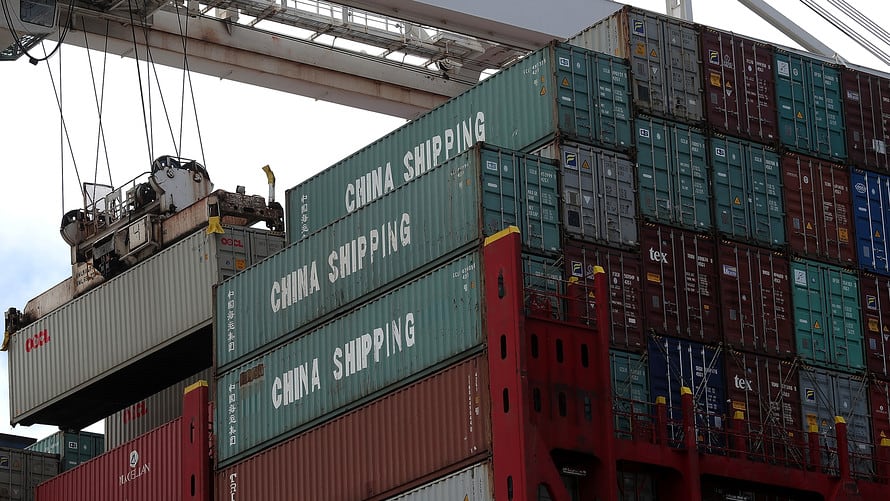
The last two weeks weren’t a picnic for U.S. stock market bulls, but Wall Street remains more resilient than Chinese equities. The question for investors is whether U.S. stocks can hold up if the U.S.-China trade spat escalates.
Based on past episodes, “investors in U.S. equities have only tended to worry about China in the past when that country’s stock market and currency have both fallen,” wrote economist Ingvild Borgen Gjerde at Capital Economics in a Thursday note. “Bearing this in mind, it is perhaps surprising that U.S. equities have held up quite well during the past two weeks.”
Indeed, the yuan dropped 3.4% against the dollar in June, for its biggest monthly decline since at least December 1998, The Wall Street Journal reported, citing Thomson Reuters data. The Shanghai Composite Index SHCOMP, +2.17% saw an 8% monthly decline, having fallen into a bear market earlier this week as it declined more than 20% from its recent peak.
The S&P 500 SPX, +0.08% while slipping over the past two weeks, eked out a monthly gain of just shy of 1% in June.
For the most part, analysts and economists appear cautiously optimistic that a full-blown trade war can be avoided, but emphasize that a worst-case scenario offers a crop of unknowns.
In a Friday note, economists at UBS said their base case is that the U.S.-China dispute will be solved through negotiations, albeit only after the Trump administration formally imposes tariffs on a round of Chinese goods on July 6 followed by retaliation by Beijing.
“If we are wrong, escalation could quickly lead to substantial adverse effects. Our view is that additional tariffs after this first round points to a full trade war with China,” they said. Across-the-board 10% tariffs on all China imports would boost inflation by a quarter of a percentage point and slow growth by around 0.2 percentage point.
A full trade war with higher tariff rates would also “disrupt supply chains, leading to nonlinearities, with substantially higher inflation in the near term and possibly a recession,” they said. “We see the probability of such an escalation as low, but not to be ruled out.”
That said, the economists don’t think the Federal Reserve would overreact to a tariff-induced overshoot of its inflation target. Instead, they expect that policy makers would view the surge as a one-time move that would leave inflation unchanged over time as long as inflation expectations don’t rise, sticking to the “received wisdom” that it’s better to look past the inflationary aspect of a supply shock and instead focus on mitigating the downside harm to the economy.
And while there’s been speculation Beijing allowed the yuan to fall partly in anticipation of tariffs (a cheaper yuan makes Chinese goods less expensive on the world market), economists at Oxford Economics expect Beijing policy makers to limit further downside for the currency.
That’s because they likely fear that too much weakness would spur capital outflows and increase financial instability, wrote Louis Kujis, head of Asia economics, in a Friday note.
Kujis argued that the depreciation is a reflection of gloomier sentiment on China’s growth prospects in addition to concerns over trade tensions.
If pressure on the yuan were to intensify, he expects the People’s Bank of China would begin to intervene explicitly in an effort to support the yuan. He warned, however, that while his baseline forecast sees downward pressure on China’s currency subsiding in the second half as the dollar loses some of its luster and China’s domestic growth remains relatively solid, “continued pressure on China’s FX and equity markets amid further worsening of sentiment constitutes a key risk for markets in China and elsewhere.”
So why hasn’t that weakness so far translated into more pain for Wall Street? Gjerde at Capital Economics said the reason is twofold. For one, the market moves in China are far less dramatic than the turmoil seen in 2015-16, even if they are comparable in size. While the majority of the yuan’s fall has been seen over the past two weeks, the slide is still far more gradual than the 2015-16 devaluation, when the currency plunged sharply in a single day.
Second, the reasons for the fall are somewhat different. The 2015-16 devaluations were seen as an attempt to shore up the economy and avoid a so-called hard landing, she said. The current weakness is more about concerns about China’s growth outlook, while there are fewer fears of a hard landing.
Capital Economics looks for growth to slow slightly in the remainder of the year before stabilizing in early 2019. “If we are right, there shouldn’t be far-reaching consequences for markets in the rest of the world,” she said.
























